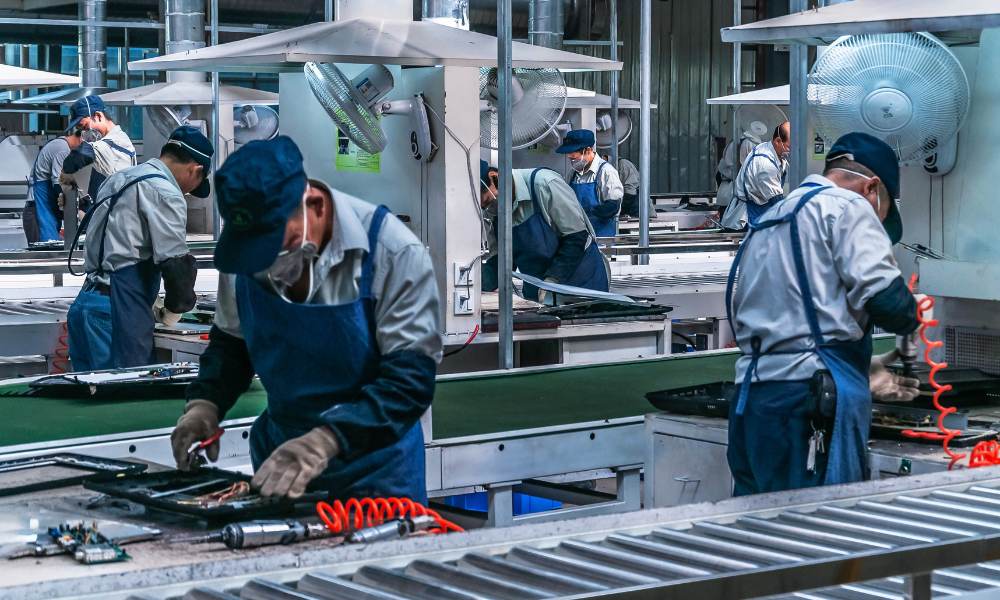
In this comprehensive exploration, we will delve into the profound and far-reaching effects of minimum wage increases on American workers, businesses, and the overall economy. Our objective is to provide an extensive analysis that not only informs but also equips you with a well-rounded perspective on the minimum wage policy in the United States."
To fully comprehend the implications of minimum wage adjustments, it's essential to embark on a historical journey through the annals of labor regulation in the United States. The concept of a minimum wage was not born in isolation; it emerged as a response to dire working conditions and exploitative practices during the early 20th century.
The Federal Minimum Wage Act of 1938 marked a pivotal moment in American labor history. It established a federal minimum wage of 25 cents per hour and set the stage for decades of debate and subsequent adjustments. Since its inception, the federal minimum wage has been periodically raised, aiming to keep pace with inflation and provide workers with a more equitable income.
Economic perspectives on the minimum wage are as diverse as the impacts it generates. Understanding these theories is crucial in assessing the complex terrain of minimum wage policy.
Keynesian Economics: From a Keynesian perspective, raising the minimum wage can stimulate economic growth. When low-income workers receive higher wages, they have more disposable income, which, in turn, fuels consumer spending, spurring demand for goods and services. This increased demand can potentially lead to business expansion and job creation.
Neoclassical Economics: On the other hand, neoclassical economists tend to be more cautious about minimum wage increases. They argue that artificially raising wages can disrupt the labor market, potentially leading to job loss, particularly among low-skilled workers. Employers may respond by cutting back on hiring or automating tasks, which could result in unemployment.
Labor Market Dynamics: Labor market dynamics play a significant role in the minimum wage debate. The elasticity of labor demand, industry-specific conditions, and regional economic disparities all influence how minimum wage adjustments affect businesses and workers. It's important to recognize that there is no one-size-fits-all answer to the minimum wage question.
Let's delve deeper into how minimum wage increases directly affect American workers:
Poverty Reduction: Advocates argue that raising the minimum wage is a potent tool for poverty reduction. Low-wage workers often struggle to make ends meet, and an increase in their earnings can lift them out of poverty or significantly alleviate their financial hardships.
Enhanced Job Satisfaction: Higher wages can lead to improved job satisfaction and higher morale among workers. This can result in reduced turnover rates, which are costly for businesses.
Education and Skills: Some proponents of minimum wage increases contend that they encourage workers to invest in education and skills development. When individuals see the potential for better compensation, they may be more motivated to pursue additional training or education, ultimately increasing their earning potential.
It's essential to consider how minimum wage adjustments affect businesses, especially small enterprises that often operate on thin profit margins:
Operating Costs: For businesses, labor costs are a significant portion of their operating expenses. When the minimum wage rises, employers may face increased costs, which can lead to tough decisions such as reducing employee hours, cutting benefits, or even closing down.
Competitive Advantage: Some businesses, particularly larger corporations, may see an increase in consumer support when they pay employees higher wages. This can create a competitive advantage in attracting both customers and talent.
Automation and Innovation: As labor costs rise, some businesses may opt to automate tasks or invest in innovation to maintain profitability. While this can lead to increased efficiency, it may also result in job displacement for low-skilled workers.
The impact of minimum wage increases can vary significantly across different regions of the United States. What works in a high-cost metropolitan area may not be suitable for rural communities with lower living expenses. It's essential to account for these regional disparities when crafting minimum wage policy.
To gain a comprehensive understanding of the real-world impact of minimum wage increases, let's turn to case studies and empirical data. Various states and municipalities have enacted minimum wage adjustments beyond the federal level, offering valuable insights into the effects of such policies.
Seattle, Washington: Seattle's journey to a $15 minimum wage is one of the most well-documented cases. Studies have shown mixed results, with some indicating positive wage growth for workers and others highlighting challenges for small businesses.
San Francisco, California: San Francisco has one of the highest minimum wages in the country. Research suggests that while some low-wage workers benefit, others may face reduced hours or job loss.
Mississippi: In contrast, Mississippi has maintained the federal minimum wage. Examining the economic conditions in states like Mississippi can provide contrasting perspectives on the minimum wage issue.
In conclusion, the debate surrounding minimum wage increases is intricate, and marked by compelling arguments on both sides. While elevating the minimum wage can serve as a tool for poverty alleviation and economic stimulation, it is imperative to acknowledge potential challenges, including job displacement and the specter of inflation. Moreover, the real-world impact varies substantially based on regional disparities and industry-specific conditions.
As the nation grapples with the complexities of minimum wage policy, informed and nuanced discussions are essential. Policymakers, businesses, and workers must weigh the pros and cons carefully, considering the unique circumstances of their communities and industries. The future of minimum wage policy in the United States will undoubtedly continue to evolve, shaped by ongoing research, economic trends, and the ever-changing needs of American workers